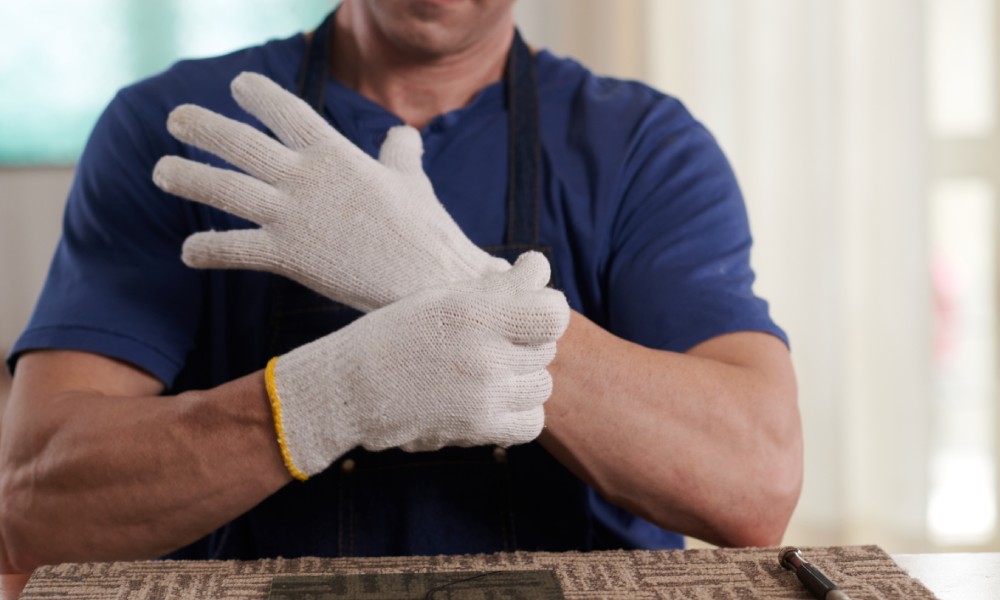
The Role of Protective Gloves in Preventing Workplace Injuries
Protective gloves play a pivotal role in safeguarding workers across a multitude of industries, serving as a vital barrier against a myriad of workplace hazards. From cuts and abrasions to chemical exposures and thermal risks, these gloves serve as an important protection for hands from potential injuries and ensuring the safety and well-being of employees. In this blog post, we will delve into the crucial role of protective gloves in preventing workplace injuries, exploring their importance, key considerations in selection, and best practices for ensuring effective protection.
The Importance of Protective Gloves
Protective gloves are indispensable tools in workplace safety, serving as a crucial barrier against a wide array of hazards. They offer essential protection from cuts, abrasions, chemical exposures, and thermal risks, safeguarding workers' hands from potential injuries. By mitigating these risks, protective gloves play a pivotal role in enhancing safety protocols and ensuring the well-being of employees. Additionally, gloves contribute to maintaining productivity by enabling workers to perform tasks confidently and efficiently without fear of injury. Their importance extends beyond physical protection, instilling a sense of security and confidence among workers. Therefore, investing in high-quality protective gloves and promoting their proper use is paramount for fostering a safe and healthy work environment while minimizing the incidence of workplace injuries.
Types of Protective Gloves
Protective gloves come in various types, each designed to address specific workplace hazards and applications:
- Cut-Resistant Gloves: Engineered to provide protection against sharp objects such as knives, glass, and metal, these gloves are often made from materials like Kevlar, Dyneema, or HPPE.
- Chemical-Resistant Gloves: Designed to shield hands from exposure to hazardous chemicals and liquids, these gloves are typically made from materials such as neoprene, nitrile, or butyl rubber, offering resistance to various chemical compounds.
- Heat-Resistant Gloves: Built to withstand high temperatures and thermal hazards, these gloves are essential for tasks involving hot surfaces, flames, or molten materials. Materials like leather, Kevlar, or Nomex are commonly used for heat resistance.
- Cold-Weather Gloves: Insulated gloves designed to provide warmth and protection in cold environments, preventing frostbite and maintaining dexterity. These gloves often feature insulation materials like Thinsulate or fleece lining.
- Electrical Gloves: Specifically designed to protect against electrical hazards, these gloves are made from materials like rubber or latex and undergo testing to ensure adequate insulation properties.
Choosing the right type of protective gloves is essential for effectively mitigating workplace risks and ensuring the safety of employees in various industries.
Prolonging Glove Lifespan and Effectiveness
Prolonging the lifespan and effectiveness of protective gloves is crucial for optimizing their performance and ensuring continued safety in the workplace. Regular maintenance and care practices can significantly extend glove longevity. Proper storage in a cool, dry place away from direct sunlight and chemicals helps prevent premature deterioration. Cleaning gloves regularly with mild soap and water removes dirt and contaminants, preserving their protective properties. Inspecting gloves for signs of wear, such as tears or punctures, allows for timely replacement before compromising safety. Additionally, avoiding exposure to harsh chemicals, sharp objects, and excessive heat can prevent damage and maintain glove integrity. By implementing these maintenance measures and handling gloves with care, workers can maximize their durability and effectiveness, ultimately reducing the frequency of replacements and ensuring ongoing protection against workplace hazards.
Beybi Plastik, since its establishment in 1949; operates in the field of personal protective work safety gloves, examination gloves production and sales, sterile surgical gloves and medical consumables sales and marketing.



